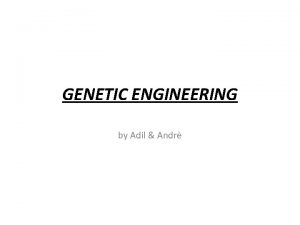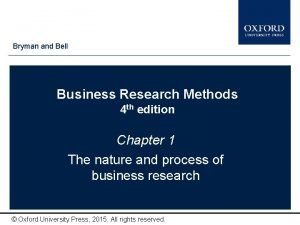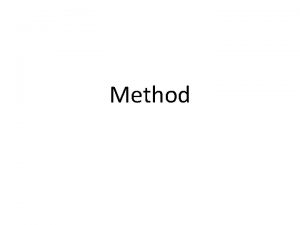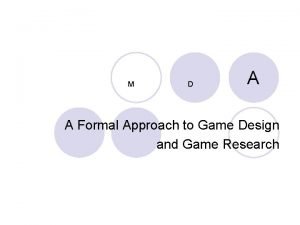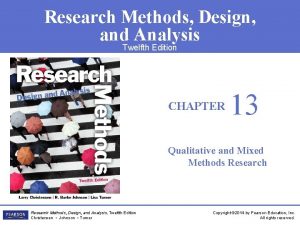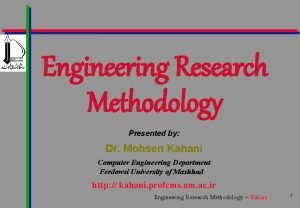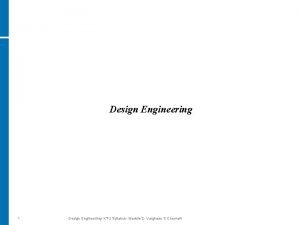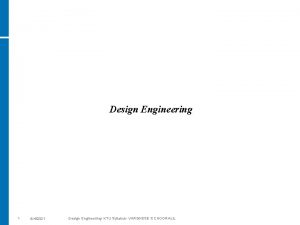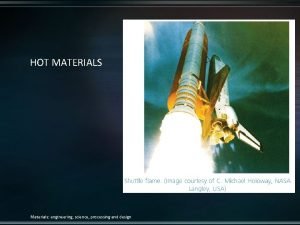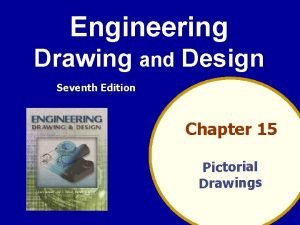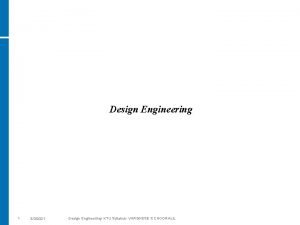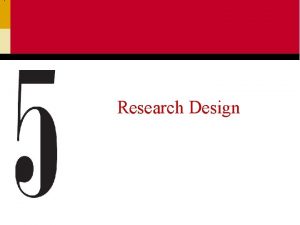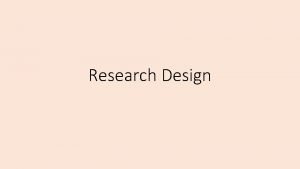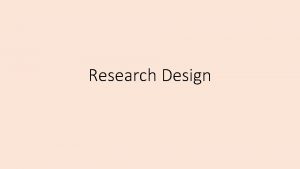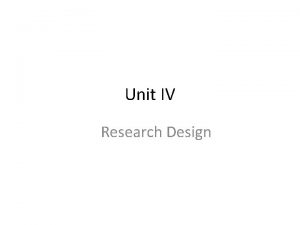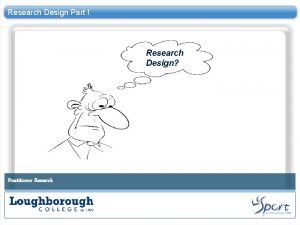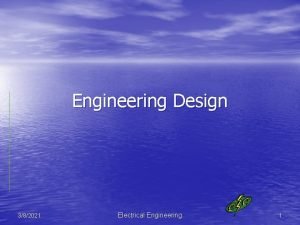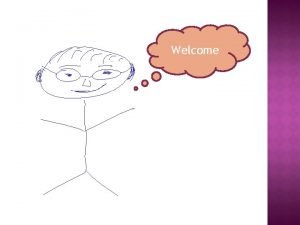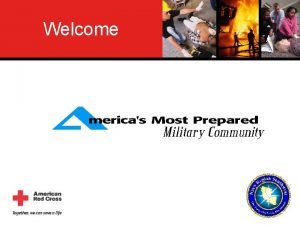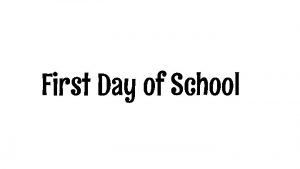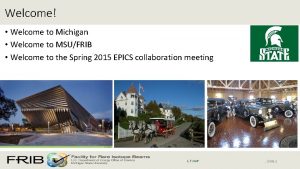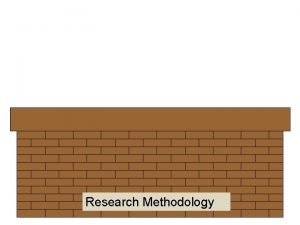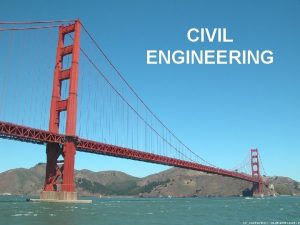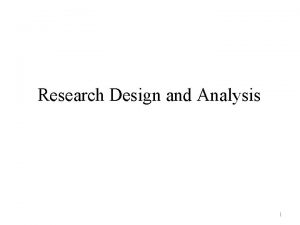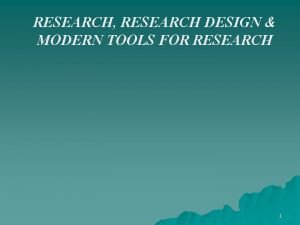Engineering Design and Research Welcome to ENGINEERING DESIGN









































- Slides: 41

Engineering Design and Research Welcome to ENGINEERING DESIGN AND RESEARCH. Upon entering the class please have a seat towards front of the class (Do not move chairs from one table to another).

to understand apply knowledge / skills required to create & transform ideas + concepts into a product that satisfies specific requirements. Students will experience design engineering in the creation, synthesis, iteration, and presentation of design solutions. This course will maintain a focus on: the history (and future) of engineering, how engineers apply mathematical, scientific, creative, and technical knowledge / skills in creation (refinement) of technical products/systems. A key approach will be the employment of a sequential, and iterative design and development

. The following major ‘topics’ or ‘chapters’ will be included to organize instruction of appropriate standards and benchmarks and reflect contemporary engineering industry practices: • Principles of Design • Engineering Resources • Engineering Design Process • Project Management

Major projects = Green Energy Design – Perform guided experiments using Fuel Cell Car. Research & design a prototype ‘concept’ alternative fuel car Rockets - Team America Rocket Challenge – Work in a team to develop a rocket that can launch an uncooked egg 700 feet in air, deploy recovering system to safely land egg as close to 45 seconds as possible. Topic Investigations – Research specified area of engineering to create a presentation that includes written report, power point presentation instructional video and informative brochure.

*Portfolio/Journal: To document and support participation and progress in the class students will submit a project portfolio/Journal documenting the student’s work. Portfolio format – The portfolio should be presented in the following format. Title Page - Include name of challenge, team name and logo, name of student and mod number. Table of Contents Body – Design Brief, Class notes (Class reading, video, or computer research lesson), data, design sheets, and modifications. Conclusion – Was solution successful? Recommended modifications

LAB SAFETY – It is imperative students practice proper lab safety and refrains from horseplay in the technology lab. Students not following lab safety will not be permitted to work in the lab setting and will be assigned alternative lessons. Absolutely no horseplay. Wear safety glasses during lab activities. Do not distract students using power tools, cutting tools, hot glue guns, or electronic devices. Use tools / equipment only after proper instruction from teacher. Use tools / equipment correctly, after receiving teacher permission, and only when teacher is in classroom. Report all accidents and safety concerns immediately to instructor. Adhere to all BCPS computer usage policies

ENGINEERING DESIGN RESEARCH Proposed Outline – The proposed outline indicates one lesson (lasting more then one class period) per week. UNIT 1 Principles of Design Lesson 1 Design - A Formal Process Lesson 2 Design Requirements and Prioritizing Constraints Lesson 3 A Human Factors Affecting Design Lesson 3 B Environmental and Industrial Factors Affecting Design Lesson 4 Research and Market Profit Influence on design Lesson 5 Refining Design UNIT 2 Engineering Resources Lesson 1 Technology Systems - Building Blocks and Technology Transfer Lesson 2 Material Science

ENGINEERING DESIGN RESEARCH Proposed Outline – The proposed outline indicates one lesson (lasting more then one class period) per week. UNIT 3 Engineering Design Process Lesson 1 Trade Offs vs. Creativity in Design Lesson 2 Design Principles and Problem Clarification Lesson 3 Modeling Techniques Lesson 4 Communicating Results UNIT 4 Project Management Lesson 1 Managing Engineering Design

LAB SAFETY – It is imperative students practice proper lab safety and refrains from horseplay in the tech lab. Students not following lab safety will lose lab privileges and be assigned alternative lessons. - Absolutely no horseplay. - Wear safety glasses during lab activities. - Do not distract students using power tools, cutting tools, hot glue guns, or electronic devices. - Use tools / equipment only after proper instruction from teacher and after receiving teacher permission. -Report all accidents and safety concerns immediately to instructor. -Wear safety glasses when using power equipment

Text: Engineering Your Future Chapter – Engineering Design pp. 351 – 377 Answer handout questions then complete ‘Reverse Engineering Models’ assignment (described at bottom of handout). Be sure to take notes (sketch or written) documenting method of taking object apart so object can be re-assembled.

Engineering Design Research L 2 Objective: Analyze a common object as we deconstruct then reconstruct the object. Propose modifications that might be applied to improve design. DRILL: Identify three separate engineering fields (example: structural engineer)

Before we continue our ‘reverse engineering’ asignmnet it is important to spend a little time on General Lab Safety - Upon entering class immediately have a seat and complete daily drill. - Never touch class tools equipment without teacher permission. - Only use equipment that teacher has demonstrated. - Use tools / equipment as directed and for purpose tool is intended. - If you have a question on how to use equipment, tools or how to do a procedure ask for teacher instruction. - Report all damaged/ broken/ malfunctioning equipment to teacher.

How many of the following rules did we get? • When working around machines with moving and/or spinning parts be sure to secure dangling jewelry, long hair, loose clothing, and remove accessories that might get caught. • When working with equipment focus on what you are doing. Do not speak to people operating machines. • Stay out of machines ‘Safety Zone’ (3 foot perimeter) if you are not directly involved in operation. • Immediately report all accidents/ injuries to

A few more important safety items • Tools for cutting should be sharp…Dull tools cause injuries • Wear safety glasses • Return tools and equipment to proper location as soon as you are finished using it! • Do not carry long stock by balancing it in center. • Wear an apron to protect / secure clothing • Do not put sharp tools or hot items near neighbors, face, or handle carelessly. • Do not use electrical tools or items in such a

Engineering Design Research L 2 Complete ‘Reverse Engineering Models’ assignment (described at bottom of chapter 13 handout). Be sure to re-assemble model with all parts in correct location. Accurately sketch a diagram of all of the parts and illustrate how they fit together to make the device operate. List at least three ways you feel the device could be improved.

Engineering Design and Research L 3 – Safety Review Safety Video Safety test • OBJECTIVE : Safety • DRILL: Identify three important safety rules to follow while working in the Technology Lab

SAFETY VIDEO The following video deals with safety in the Tech Ed lab, as well as general safety rules to follow outside of class. As there is so much information presented in video you will not be asked to take notes. You are expected to pay attention

SAFETY QUIZ Please be sure to immediately fill in name, period and date. Do not write on question sheet.

Engineering Design Research L 4 Objective: Identify significant events in evolution of human engineering as we read Chapter 1 of Engineering Your Future. DRILL: Identify two historic engineers who lived in the 1400’s and made contributions that changed society

Engineering L 5 – Introduction to Drafting • OBJECTIVE : Identify common measuring tools to measure linear distance as we review text to prepare to set up first drafting drawing • DRILL: How has technological advancement of the last twenty years

Introduction to Drafting • Basic Drafting tools include: – T-Square – 30/60 Triangle – 45 triangle – Drafting Scale

Borders and Title Blocks Draw top of title block 1/2

Borders and Title Blocks Draw borders to following measurements ½ inch ¼ inch 1/4 inch

Borders and Title Blocks 3” 1” 1”

Title Block – Lettering Guides: Draw two light horizontal lines, one line 1/8” from top of title block and one line 1/8” from bottom.

Drafting Scoring Tool Example __/ 2 Line work. __/ 2 Lettering. __/2 Dimensioning __/ 3 Accuracy. *values may change according to drawing • Be sure to use light construction lines as you are laying out (constructing) the drawing.

Drawing textbook for information pertaining to Orthographic Projection Refer to pages 130 - 135 of Mechanical Drawing textbook for information on dimensioning. P. 130 Dimensioning 11. 2 P. 130 Lines and symbols 11. 3 P. 130 Dimension lines 11. 4 P. 130 Arrowheads 11. 5 p. 130 Extension Lines P. 133 Placing dimensions… 11. 2

Engineering L 6 – Introduction to Drafting Visualization and Graphics • OBJECTIVE : Model Sketching techniques described in text in order to improve ability to communicate concept ideas • DRILL: Explain the difference between technical sketching and

Graphics. Refer to pages 229 - 280 of Engineering Your Future textbook The packet you will be completing as you study this chapter is designed to highlight important concepts, techniques and skills. Your are expected to pre-read the packet before beginning to read the chapter. Answer questions and complete technique and skills practice as the material is covered in the chapter. You are not expected to complete

Engineering L 7 – Introduction to Drafting Visualization and Graphics • OBJECTIVE : Improve visualization skills and demonstrate communication skills as you continue Chapter 9: Visualization and Graphics exercises • DRILL: Reverse the direction of the fish image below my moving only three sticks

Engineering L 8 – Introduction to Drafting Visualization and Graphics • OBJECTIVE : Complete exercises as described in Visualization and Graphics packet • DRILL: Define the following three types of drawings – Orthographic – Oblique

Rules of Orthographic Drawing Most three dimensional Objects contain six views Top Front W Side L Left Front Bottom Back W H Right Rule 2: The Length, Width, and Height Of the Front, Top and Side views must Be equal

Rules of Orthographic Drawing Top Front W Side L Front W H Right -A three view drawing is used to Show size and shape of rectangular And complex objects. - Most three view drawings will contain front, side and top view

Rules of Oblique Drawing Top Front Side L Front H Text: Mechanical Drawing – Pages 203 – 207 Object placed with one surface (front) parallel to picture plane

Rules of Oblique Drawing Front 30 degrees Text: Mechanical Drawing – Pages 203 – 207 Object placed with one surface (front) parallel to picture plane Oblique drawing is made by projectors at an angle of 30 degrees with picture plane and parallel to each other

Rules of Isometric Drawing Isometric drawing Multi-view drawing Top Front W Side L Front W H Right Isometric drawings get their name from the fact that the angles formed by the lines at the upper right corner are equal – each is 120 degrees. Used when top, side and front are equally important.

TO PRODUCE AN ISOMETRIC DRAWING 1. Lightly draw the upper right corner of an isometric box that will hold object. 2. Complete box by lightly drawing lines parallel to three original lines, spaced according to Length, Height and Width

Engineering L 9 – Human Factors in Design • OBJECTIVE : Analyze information presented in technical document to determine importance of human factors in design. • DRILL: What is meant by the term ergonomics?

Engineering L 10 – Ergonomics and Pattern Development Challenge • OBJECTIVE : Analyze information presented in technical document to determine design specs and constraints of Engineering Challenge • DRILL: What is meant by the term pattern development or stretch-out development?

Engineering L 11 – Introduction to Drafting Visualization and Graphics • OBJECTIVE : Apply engineering design process in design and construction of ‘to scale’ prototype Emergency Shelter Challenge. • DRILL: Identify three materials you chose for your shelter and explain the reasoning of the choices

Engineering L 12 – Introduction to Drafting Visualization and Graphics • OBJECTIVE : Evaluate prototype Emergency Shelter Challenge to determine success and methods of improvement. • DRILL: Identify three examples of ergonomic design you chose for your shelter and explain the reasoning of
 Wise men three clever are we
Wise men three clever are we Methods versus methodology
Methods versus methodology Research appendices example
Research appendices example Qualitative research methods
Qualitative research methods Exploratory research types
Exploratory research types Importance of qualitative research
Importance of qualitative research Applied research means
Applied research means Contrast applied research and basic research
Contrast applied research and basic research 40 days baby in womb
40 days baby in womb Applied vs fundamental research
Applied vs fundamental research Exploratory vs conclusive research
Exploratory vs conclusive research What is inquiry in practical research 2
What is inquiry in practical research 2 Defining the problem in research
Defining the problem in research Zeal dnyanganga college of engineering and research
Zeal dnyanganga college of engineering and research Research on the pros and cons of genetic engineering
Research on the pros and cons of genetic engineering Forward engineering in software engineering
Forward engineering in software engineering Research report vs research proposal
Research report vs research proposal Explain types of research
Explain types of research Research instrument in experimental research
Research instrument in experimental research Correlational comparative research
Correlational comparative research Research methodology components
Research methodology components Basic research vs applied research
Basic research vs applied research Purpose of research
Purpose of research Characteristics of conclusive research
Characteristics of conclusive research Examples of research objectives in a research proposal
Examples of research objectives in a research proposal Research instrument in experimental research
Research instrument in experimental research A formal approach to game design and game research
A formal approach to game design and game research Design research methodology
Design research methodology Design meaning in research
Design meaning in research Module 7 research design and ethics in psychology
Module 7 research design and ethics in psychology Research methods design and analysis
Research methods design and analysis Exploratory research example
Exploratory research example Descriptive correlation research
Descriptive correlation research Exploratory design
Exploratory design Engineering research methodology
Engineering research methodology Design for output
Design for output Product development and design ktu syllabus
Product development and design ktu syllabus Design engineering ktu
Design engineering ktu Materials: engineering, science, processing and design
Materials: engineering, science, processing and design European hygienic engineering & design group
European hygienic engineering & design group Sketch chapter 15
Sketch chapter 15 Ktu design and engineering syllabus
Ktu design and engineering syllabus














